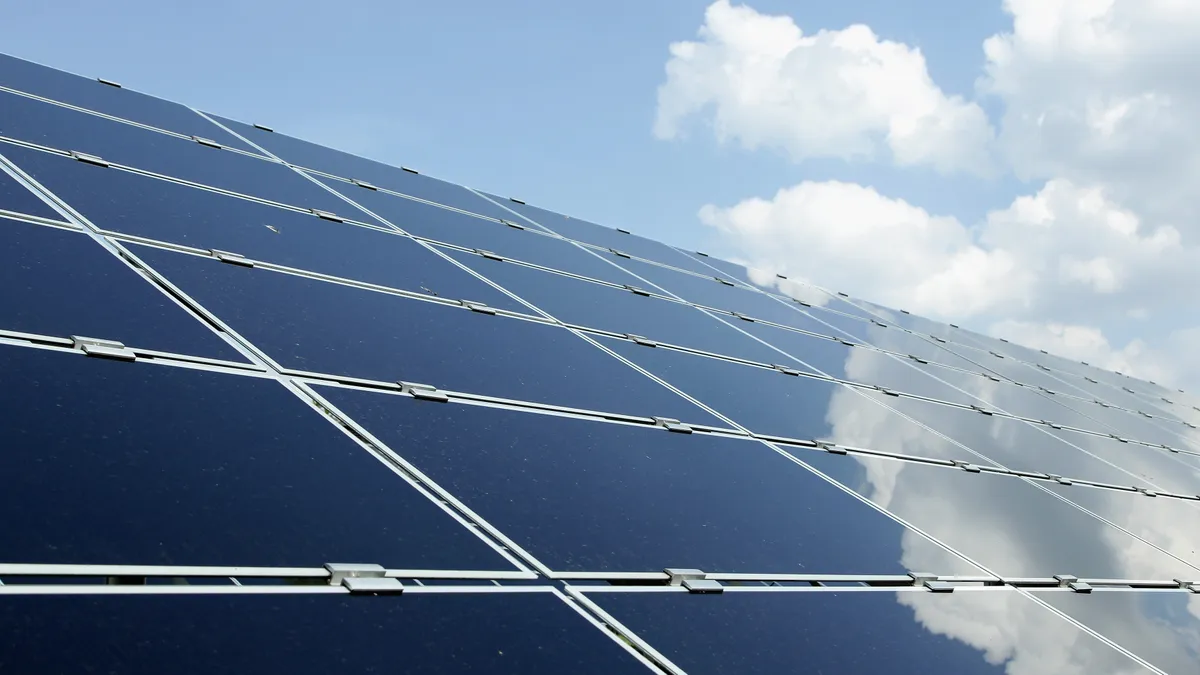Dive Brief:
- Solar costs are dropping twice as quickly as the costs of onshore wind, according to Lazard's annual comparison of the cost of various energy sources and technologies. Additionally, renewable resources remain competitive with existing fossil fuels and nuclear power.
- Hydrogen will play a significant role in the energy transition along with renewables, storage and other resources in a broad-based approach, according to Lazard's levelized cost of studies for energy, storage and hydrogen, released Thursday.
- Supply chain problems triggered by the pandemic are likely to boost the cost of building new renewable energy projects in the next year or so, Lazard notes.
Dive Insight:
Onshore wind and utility-scale solar prices are dropping at a slower rate, with Lazard projecting solar costs falling at 8% and onshore wind at 4% based on five-year compound annual declines. However, renewable resources remain cost competitive with existing nuclear reactors, coal and gas fired plants due, in part, to continued federal subsidies, Lazard finds in its levelized cost of energy (LCOE) analysis of renewables.
When subsidies are included, onshore wind and utility-scale solar weigh in at $25/MWh and $27/MWh on average, respectively. Lazard pegs the LCOE for a new combined-cycle, gas-fired plant at $45/MWh to $74/MWh.
The average LCOE for existing, fully depreciated coal, nuclear and combined-cycle gas plants is $42/MWh, $29/MWh and $24/MWh, respectively, according to Lazard.
That's well below coal ($42/MWh), and a few dollars below nuclear power ($29/MWh).
The cost of building renewable energy projects, however, may be poised to rise in the wake of the pandemic, the review finds.
Current prices are based on transactions that took place a year to 18 months before the completion of projects, and so are not necessarily reflective of the turmoil that has roiled supply chains over the past 20 months or so, according to Lazard, an investment firm.
"Commodity cost inflation, supply chain disruption and accelerating downstream demand for renewable energy generation capacity is putting upward pressure on project capital costs," Lazard states in the press release detailing the reports. That in turn, "will likely lead to higher LCOE costs in future iterations of this report."
Still, Sam Krasnow, senior advocate at the Natural Resources Defense Council, said the findings of the Lazar report are encouraging.
"As the industry progresses along the experience curve, it's exciting to watch the cost of renewable wind and solar power fall," Krasnow said in an email. "We expect those cost reductions to overcome any upward price pressure as the supply chain races to catch up to the demand."
Meanwhile, Lazard's LCOE analysis on hydrogen notes its potential to "decarbonize a broad array of sectors," calling the fuel "versatile."
But hydrogen is "currently more expensive than the fuels it would substitute," the Lazard report states, noting that "minimal transport, conversion or storage" are needed for hydrogen conversion to make sense.
"We're also seeing that the transition will not be dominated by any one solution — rather a new ‘all of the above' approach," George Bilicic, vice chairman and global head of Lazard's Power, Energy & Infrastructure Group, said in a press statement.
On energy storage, hybrid applications — storage combined with solar — are becoming more popular to mitigate the weather dependent nature of this renewable fuel source. This trend, in turn, is being drive by the adoption of Estimated Load Carry Capability methodologies in the utility sector to value resources, the report finds.














